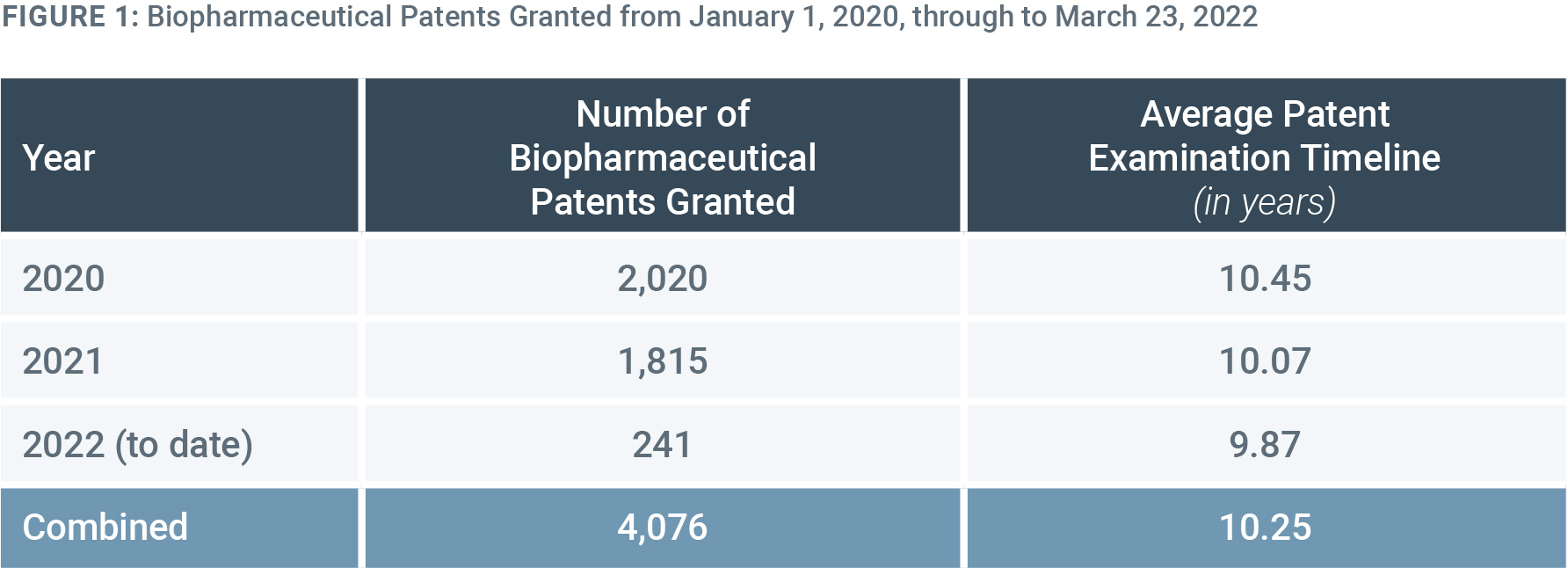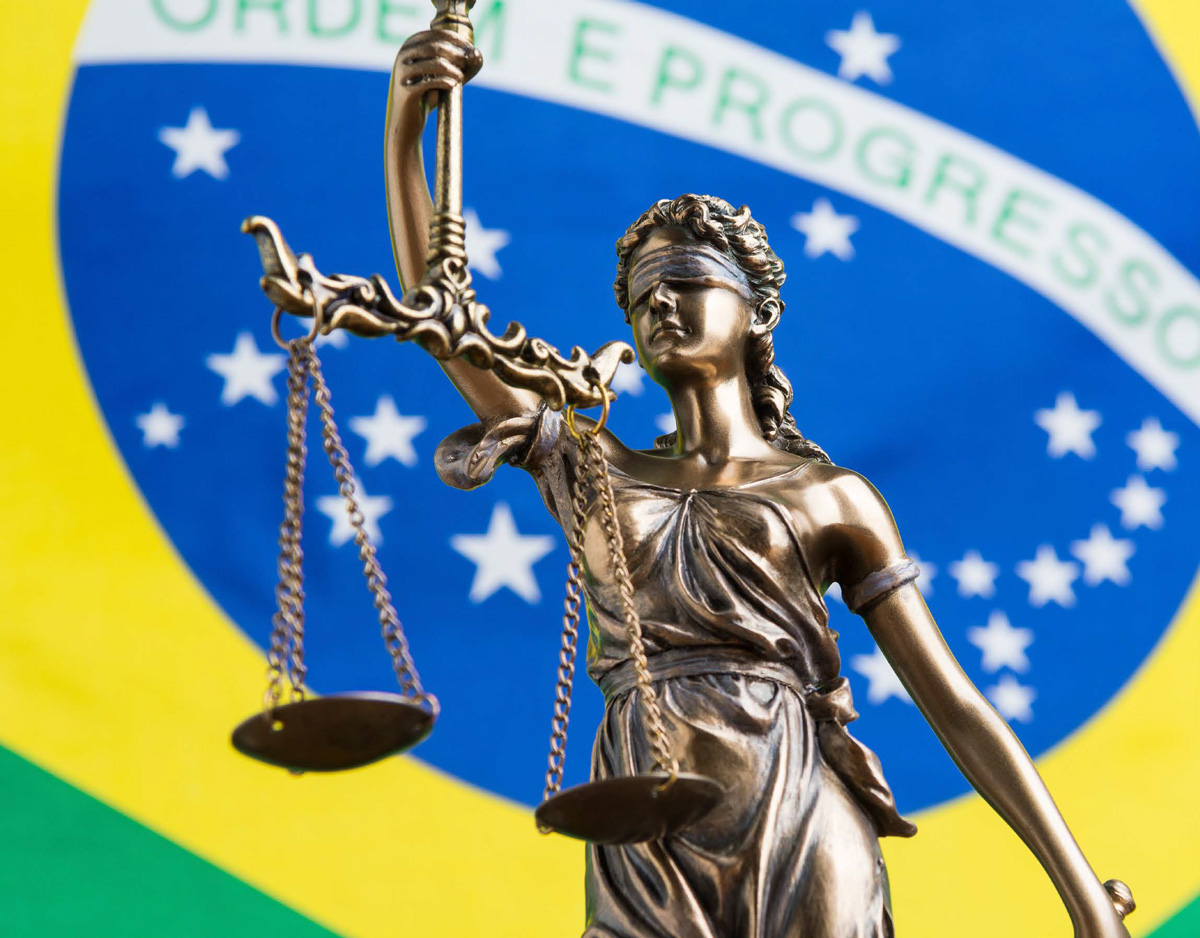As Brazil looks to boost growth after Covid, knowledge-based industries will be key. These industries rely on intellectual property rights, especially a predictable and efficient patent system. But a recent decision by the Supreme Court eliminating a key provision in Brazil’s National Patent Law that gave all patent holders a critical safeguard against unreasonable patent examination delays, will weaken an already challenging IP environment.
Following this court decision, there are a number of reforms Brazil can easily implement to put its patent system back on track. These include more worksharing agreements with other countries’ patent offices and outsourcing of prior art searches, and mechanisms to restore patent life lost to bureaucratic delays in patent examination – so-called Patent Term Adjustment.
Such reforms will ensure that Brazil can continue its transition to a knowledge-based, high-income economy, write Philip Stevens and Mark Schultz.
Introduction
To recover from Covid and continue its path to high-income status, business as normal is not an option for Brazil’s economy. The pandemic has worsened structural economic problems faced by the country, underlining the limitations of relying on the export of commodities. To create jobs and more sustainable economic growth, Brazil must accelerate its progress up the economic value-chain towards higher-value, knowledge-based industries.
One essential policy supporting the development of innovation industries is a robust and predictable framework for the protection of intellectual property rights. If patents cannot be efficiently granted and enforced, few local entrepreneurs will be able to secure investment for their innovations and build viable businesses. Multinational knowledge-intensive companies, who bring with them skills, knowledge, and much needed capital, will look elsewhere to invest.
To its credit, the Brazilian government has long realised the need to boost Brazil’s innovation potential. It has taken several much-needed steps to improve the IP system, which had gained an unfortunate international reputation for inefficiency, particularly in the examination of patents.
In February 2019, reformist professional economist Claudio Vilar Furtado was appointed head of the Brazilian National Institute of Industrial Property (INPI), with a mandate to promote competition and improve the IP system.
A recent decision by the Supreme Court has caused alarm amongst innovative companies, making them concerned their inventions will no longer enjoy sufficient terms of protection in Brazil to make their investments worthwhile.
Also that year a new Inter-ministerial Group on Intellectual Property was established to coordinate and oversee all issues relating to IP policy in Brazil: a recognition by the government that innovation is a major driver of competitiveness, investment and growth. Reform at INPI has made a dent in Brazil’s massive backlog of aged patent applications, which has unfortunately suffered from the longest delays among major economies.
Despite this reform, a May 2021 decision by the Supreme Court has caused alarm amongst both Brazilian and international innovative companies. Previously, Article 40 of the Brazilian Intellectual Property Law guaranteed at least ten years of patent term after grant. This guarantee was important in a patent system where inventors see more than half the 20-year patent term eaten by examination delays. However, of the Court found Article 40 to be unconstitutional. This decision has
raised fears that many inventions will no longer enjoy sufficient terms of protection in Brazil to make their investments worthwhile. The decision is especially discriminatory given that it will be applied retrospectively to only the life science sector.
If Brazil’s IP system is to maintain its upward trajectory and contribute to the country’s economic recovery after Covid, policymakers will need to respond to this court decision with new reforms to ensure patent life is meaningful and predictable. Fortunately, there are several options used by countries both regionally and internationally that provide a possible template.
The problem of lengthy patent examination in Brazil
As a member of the World Trade Organization, Brazil has committed to grant patents of a twenty-year term (from the date of filing). To receive a patent, inventors must publicly disclose their invention in exchange for a temporary exclusive right to the invention – balancing the need to incentivise inventors to invest in and commercialise new technologies with society’s need for new, accessible technologies. This social contract is at the heart of the patent system, driving innovation and competition by allowing others to invent around and improve the product, while ensuring society benefits.
In practice, in Brazil few inventions receive anything close to this twenty-year period of protection. The twenty-year term starts running down from the moment of filing with the patent office. However, delays and backlogs while the patent office examines each patent means that it takes an average of eight years for patents to be granted.
In Brazil few inventions receive anything close to a twenty-year period of patent protection.
This average eight-year delay (longer in certain industries) effectively removes the ability to rely on a patent, thus depriving the owner of the full term. While an innovator might begin selling a product while its patent is pending, the reality is often quite different. Startups often find it difficult to secure the investment needed to build a business unless or until a patent is granted. Even larger companies hesitate to develop a market until they know they have secured patent protection. Moreover, while Brazilian law allows suits for infringement that occurred before the grant of the patent, there is a five year limitation period – shorter than the average eight year delay.
Moreover, this delay is outside of international norms. Patent offices in the U.S., China, Korea, Europe and other economies average 2 – 4 years. Indeed, Brazil’s 2019 reforms set two years as a goal.
Delays for certain fields of technology, such as biopharmaceuticals are particularly acute. Analysis by Osha Bergman Watanabe & Burton LLP (Osha), shows that the average patent examination timeline in Brazil is 10.25 years for biopharmaceutical patents granted between 2020 and 2022 (Figure 1).

Almost 60% of biopharmaceutical patent applications in this period exceeded ten years, the research notes, with 10% pending for 15 or more years at the time that they were granted (Figure 2).

Initially, the 2019 reforms at INPI appear to have generates some positive effects. In an earlier study co-authored by one of the authors of this Policy Brief, we found the overall average pendency period from application to grant was 11.4 years in 2015, with patents in the life sciences taking 12.2 years. The numbers thus have improved in recent years but are still behind global standards and don’t meet the needs of innovators.
Brazil’s patent examination system needs reform so it offers innovators stability and predictability, and compares with the world’s best
Moreover, the problem of examination backlogs for biopharmaceutical patents Brazil shows signs of worsening, with around 13,688 biopharmaceutical patents pending in March 2022 according to Osha. Despite this, the examination rate by the Brazilian Patent Office seems to be slowing, with the number of patents examined and granted since 2020 decreasing each year from 2,020 in 2020 to 1,815 in 2021 to an estimated 1,400 for 2022 (based on the number processed to date).
Previously, some compensation for these patent examination delays was provided by Article 40’s guarantee that patents would last at least ten years protection from the date they are granted. But the decision in May 2021 by the Supreme Court, finding that Article 40 is unconstitutional for all technologies and applying the decision retrospectively to pharmaceutical products and other health related inventions only, removes this important backstop from Brazil’s IP regime.
The decision leaves innovators in Brazil working with a patent system that ascribes little value to their inventions, putting the country far below the IP standards of the countries with which it is trying to compete for investment. For example, the average time to grant a patent is 2.8 years in Korea, 2.9 years in China and under 2 years in the United States, meaning that innovators in these countries enjoy far longer effective patent life.
Reforms launched by INPI aimed to close this gap by reducing the patent examination backlog by 80% by August 2021, in addition to reducing the average examination time to around two years. But the current average wait of eight years for patent examination suggests this achievement is still some way off, leaving innovators in Brazil without the benefits the patent system is supposed to provide.
Patent examination delays hurt the economy and society
This is far from an academic point. In reality, Brazil’s lengthy patent examination system hurts its economy in a number of ways, discussed in previous research by one of the authors.
First, delays in patent examination hurt entrepreneurs and undermine the ability of new businesses to develop and grow. Startups rely on outside investment, and investors typically want to see patents to secure their investments. Research shows that every year of delay reducing start ups’ sales, employment levels and the likelihood of going public with a stock offering.
Second, delays also hurt society. According to the UK Intellectual Property Office the combined losses from backlogs just at the US Patent and Trademark Office, Japan Patent Office, and the European Patent Office cost the global economy over US$10 billion a year through lost investment, jobs and products.
Finally, patent office delays hurt consumers and patients by delaying the market entry of new products, technologies and medical treatments. This is especially true of medicines, where research has shown a link between delayed availability of new drugs and weak patent protection. These launch delays are unsurprising, given the significant investments that must be made in each new market for regulatory approval, infrastructure development and medical education for each new medicine. If a patent grant is delayed, these investments won’t start until the patent is granted, meaning slower access to new medicines.
Above all, for the patent system to achieve its economic and social objectives and provide an enabling environment for innovation it needs to be stable and predictable. Swift patent examination is fundamental to this.
Reform options to put stability and predictability back into Brazil’s patent system
The removal of the sole paragraph of Article 40 removes a critical backstop that ensures all patent holders enjoy at least ten years of patent term from the moment it is granted. The decision is made and is unlikely to be revisited. This therefore leaves open the question of how to reform the Brazilian patent examination system so that it offers innovators stability and predictability, and compares with the world’s best. Two complementary options show promise.
WORK-SHARING WITH OTHER PATENT OFFICES
Patents are granted at the national level, so an international innovator has to file separate applications in each country in which it seeks protection. WIPO’s Patent Cooperation Treaty has streamlined things somewhat, giving a single point of filing for multiple jurisdictions. But it still leaves the actual patent examination to be conducted by each individual patent office. While national laws and substantive standards differ, much of the technical work is the same for each patent. Every office performs a prior art search to ensure the claimed invention is new and achieves a true inventive step. Prior art searches examine filed patents from around the world and scientific and technical publications. In theory, the results should be the same for every office, so duplicating this work is wasteful and inefficient.
Many countries have mechanisms to restore a portion of the patent lost due to unreasonable examination delays, commonly known as Patent Term Adjustment (PTA). This is a reform Brazil should seriously consider
Recognising this problem, new pathways have emerged to allow patent offices to draw on each other’s work, saving time and preventing duplication. One example is the Patent Prosecution Highway (PPH), in which different countries expedite patent examination if it has already been successfully submitted to a partner patent office in another country with similar patentability criteria.
Patent Term Adjustment is used by patent offices all over the world, including OECD members Chile, Mexico, Korea and the United States.
In its report on patent delay, London Economics explains how information provided by the original filing office can clear the way for more efficient processing in other jurisdictions. Work sharing “then allows the second office to benefit from the work done previously, reducing the examination workload and potentially improving patent quality. For instance, as available databases vary between different offices, this may allow the second office to identify prior art that they would otherwise have been unaware of.”
INPI has recognised the potential of patent examination work-sharing, since 2015 entering into agreements with patent offices in the United States, the United Kingdom, Denmark, Singapore, and the European Patent Office, among others.2 Brazil’s December 2020 National Intellectual Property Strategy calls for Brazil to play a larger role in the global IP system and expand work-sharing programs with foreign patent offices.
Brazil needs to build upon these efforts to ensure work-sharing can contribute more to reducing examination delays in Brazil. Many of these agreements are highly limited, both in the overall number of patents allowed to each applicant, and the frequency with whichthey can be filed. Brazil recently implemented changes to its work sharing programs, including making them technology-neutral, increasing the number of applications an applicant can submit (from one per month to one per week) and relaxing the limit on the total number of applications that can be submitted annually (from 400 to 600). While a useful start, the work sharing programs need expand significantly the volume of allowable application requests to be truly effective.
PATENT TERM ADJUSTMENT
Work-sharing agreements show promise for accelerating patent examination. In the Brazilian context, their limitations mean that most innovators will still suffer from unreasonably short patent life. The existence of patent work-sharing agreements, while a useful adjunct, does not incentivise a patent office to speed up its processes, and neither ultimately does it provide compensation to rights holders who suffer from patent terms eroded by no fault of their own.
With the Supreme Court ruling, innovators are left uncertain of how much effective patent life INPI’s examination process will leave them. If unusually slow, they may receive as little as one year of effective term; if unusually fast, they may receive as much as 17 or 18 years of effective life. This lack of certainty as to effective term deeply undermines the reliability of the Brazilian patent system.
To address this problem, increasing numbers of countries have mechanisms to restore a portion of the patent lost due to unreasonable examination delays, commonly known as Patent Term Adjustment (PTA). This is a reform Brazil should seriously consider to give patent life in the absence of the sole paragraph of Article 40, and ensure the Brazilian patent system is comparable to its peers internationally. It would differ from Article 40, in that it would apply on a case-bycase basis providing an adjustment based on any unreasonable delay experienced by (and not the fault of) the particular applicant.
PTA for patent office delays is in use by patent offices all over the world, including OECD members Chile, Colombia, Costa Rica, Mexico, Korea and the United States. While the schemes differ in their precise details, they all deploy various formulas to calculate the period of patent life that should be restored due to delays in the patent examination process that are not the fault of the applicant. In this way, PTA schemes ensures patent life is meaningful, providing certainty and stability for innovators, and ultimately helps the patent system fulfil its intended social and economic role.
Patent Term Adjustment is similar but distinct from Patent Term Extension (Supplementary Protection Certificates in the EU) which restore patent life for biopharmaceutical patents caused by delays in the regulatory approval process. While Patent Term Extension is available only to medicines, Patent Term Adjustment is available to patents from all forms of technology. It is important to note that PTA does not constitute an extension of patent life, but rather a partial restoration of the time lost to bureaucratic delays.
Conclusion
Given its existing science base, biodiversity and strengths in pharmaceutical and other forms of high-tech manufacturing, Brazil is well placed to reorient to a higher-value knowledge economy as the Covid pandemic recedes. A robust and predictable framework for the protection of intellectual property rights will be key to this transformation.
Brazil has some of the IP basics in place, but Brazilian leaders recognise that in the global competition for investment, minimum or subpar IP standards are not enough. Brazil must make itself attractive to both international and domestic innovators, both of whom struggle with the examination backlogs that have plagued Brazil’s patent system. Some reforms have been implemented to make the patent system more efficient, yet as this brief has shown, there is further to travel.
Much is at stake. Brazil has announced its intention to accede to the OECD, an achievement that would confirm the country as a top investment destination benefitting from high standards of governance. This process will require deep reforms to multiple areas of governance, including the framework for the protection of intellectual property rights.
OECD member and regional neighbour Chile, for example, enjoys higher standards in many areas of its patent system, including the provision of Patent Term Adjustment to compensate for delays in the examination of patents. Thanks to this and other measures, innovators in Chile enjoy far speedier average examination times of around four years (still not perfect, but an improvement on Brazil’s eight and upwards). As of June 1, 2021, amendments to China’s patent law implementing such a system went into effect, showing how seriously the issue is taken by countries that prioritise innovation.
With the decision on Article 40 leaving great uncertainty around effective patent life in Brazil, now is the time to address this issue through intelligent reform. The tools exist, they are well understood, and they are effective.
1. For clarity, the application date is either the local filing date or the filing date of an international application under the Patent Cooperation Treaty.
2. Brazil has signed PPH agreements with the following jurisdictions: United States, Europe, Japan, China, Austria, Sweden, United Kingdom, Denmark, South Korea, Singapore, and PROSUR (Argentina, Chile, Colombia, Costa Rica, Dominican Republic, El Salvador, Ecuador, Nicaragua, Panama, Paraguay, Peru, and Uruguay).



